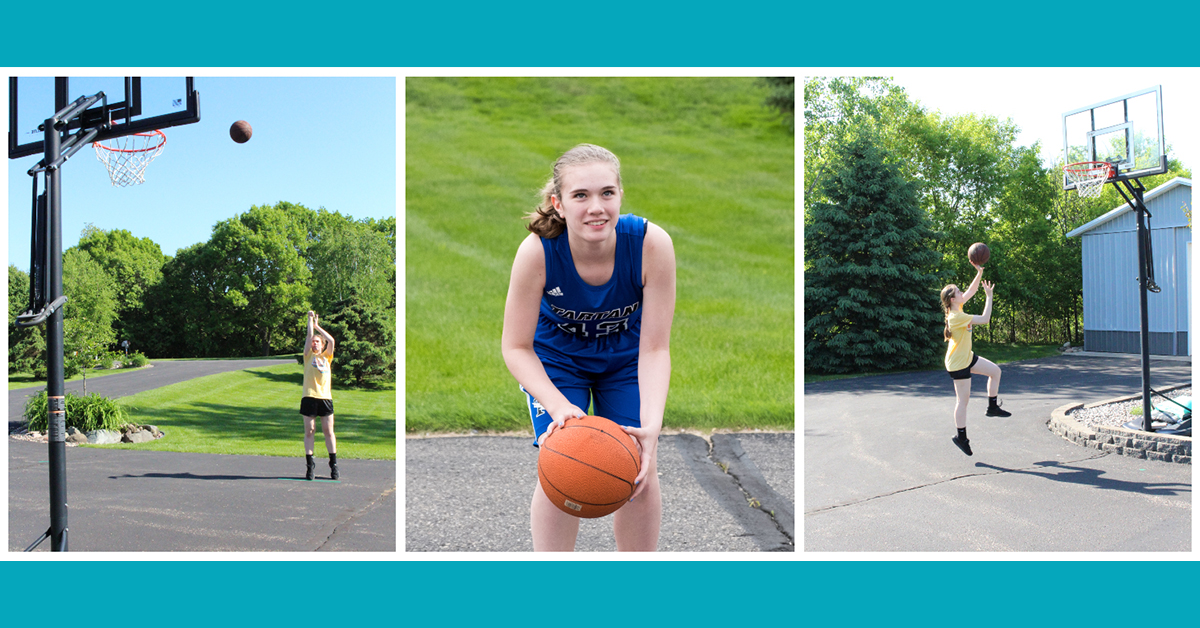
We originally posted Erika Snyder's story in June of 2017, just less than a year after she had spinal fusion surgery at Gillette.
Three years later, amid COVID, her recovery and everything else going on in the world, she's still thriving. She's an incoming high school sophomore who sounds more mature than most people you'll talk to during these odd times. Of course, a lot of life happens in three years.
Instead of playing three instruments, she's down to two. She's sticking with the violin as primary and the piano is around just in case. The trombone didn't make the cut. She's also had to reconcile with the fact that yoga won't be an option for her. But overall, she's fine with that.
She's still playing basketball and doing so at a high level. Her team tied for 1st in the conference this year. She had to change positions from forward to guard, but enjoyed the challenge and had an excellent personal season.
Following surgery, her jump shot just keeps getting better.
Read Erika's Gillette Story below:
One Journey Begins as Another Ends
As Debra Gaborik sat in the patient waiting area while her daughter Erika completed her follow-up X-rays, she overheard the conversation of the mother and daughter next to her. From the sound of it, they were beginning the process that she and Erika had gone through only months previously.
Erika had been diagnosed with adolescent idiopathic scoliosis (AIS) earlier that year, and recently had surgery to fuse her spine. When Erika was done with her appointment, Debra initiated a conversation between the two families.
“The girl was about the same age as Erika,” Debra says. “Based upon how well things had gone for us at Gillette, I thought it would be nice for them to hear from someone who had been in their shoes.”
The girls hit it off right away.
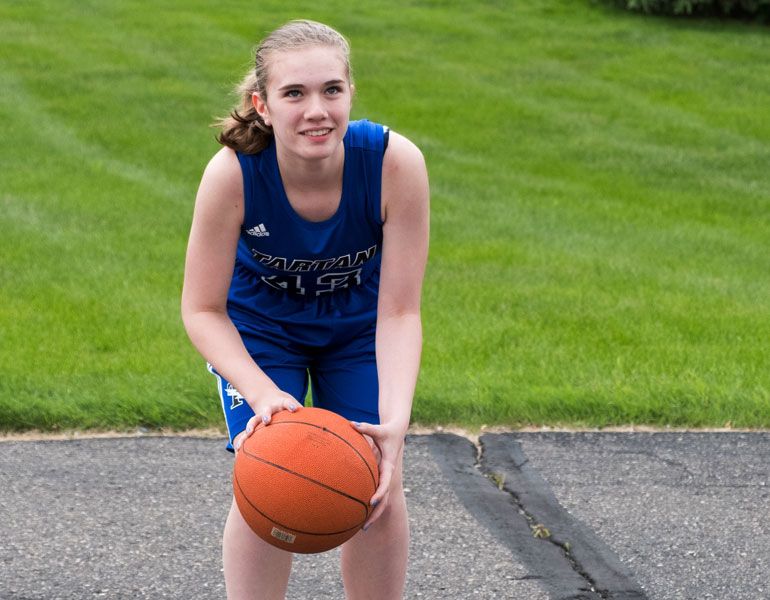
Erika, shooting free throws at her home in 2017.
Erika’s Diagnosis
In January of 2016, Erika, then 11, was shopping for clothes with her mother.
“I was standing behind her and saw that her right shoulder blade seemed to be sticking out at a 45-degree angle,” Debra says. “She had gone through a growth spurt, and had grown about four inches over the previous six months, but that was the first time I noticed anything.”
Debra took Erika to a local medical provider, where flags were raised immediately. Erika had an X-ray taken in February and was diagnosed with scoliosis.
Erika's family were soon referred to Gillette Children’s, and scheduled an appointment with spine surgeon Tenner Guillaume, MD.
“Dr. Guillaume told us that Erika had a thoracic curve of 45 degrees and a lumbar curve of 37 degrees. He said that we could opt for bracing, but that it would be very likely Erika would require surgery in the future,” Debra recalls. “This was hard for Erika to hear, and she was very reticent to talk about the concept of surgery. We decided to try bracing and wait to see how things progressed.”
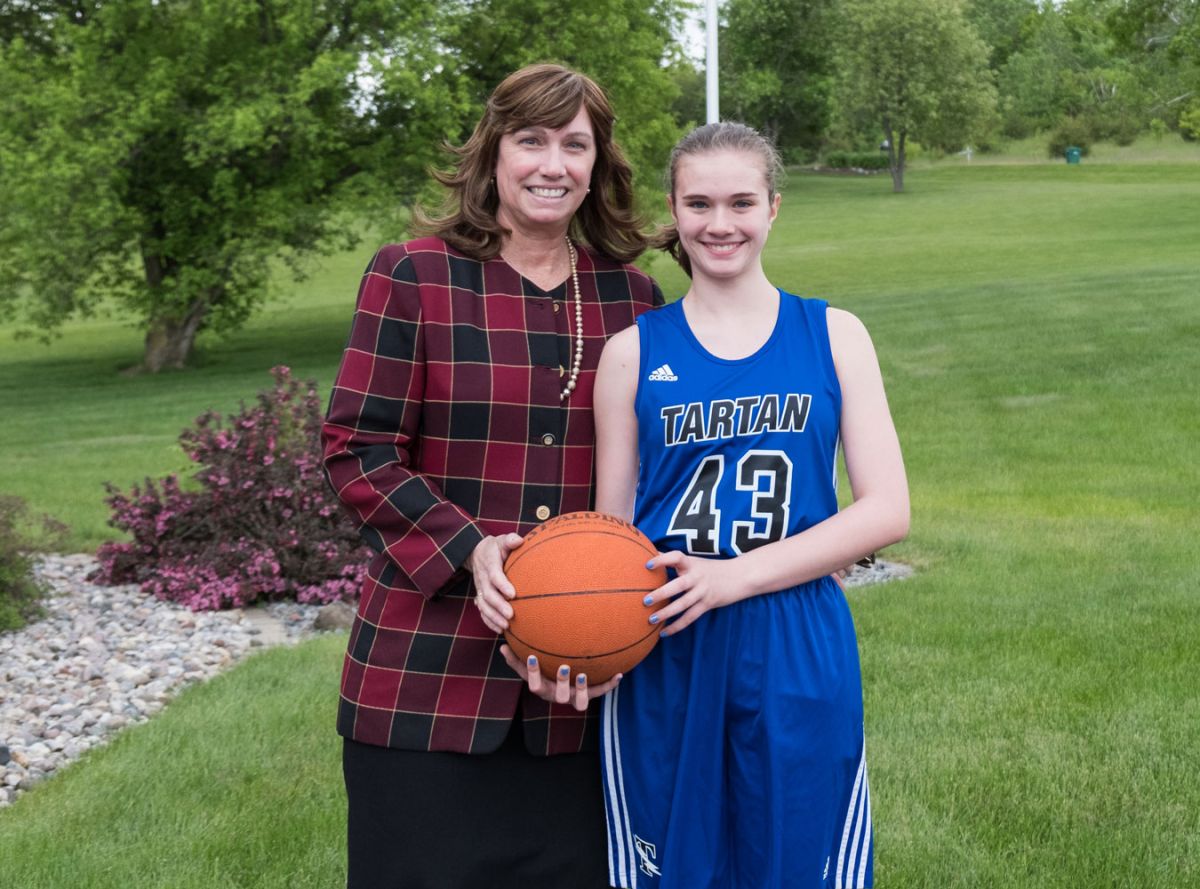
Erika and her mother Debra.
“The Hardest Part is the Going”
When Erika and her mother went back to see Guillaume in May of 2016, it became clear that bracing alone would not be enough. Obviously, the idea of taking your child in for surgery would frighten most parents, but what is less explored is what an individual child experiences when facing surgery at such a young age.
As Erika explains the process, this was something that took her time to come to grips with.
Erika:
When I first heard the words “surgery,” it really scared me. It was never something I had ever thought about, and it was overwhelming.
Even getting the brace made me nervous. Not so much the process, but I was worried people would see it and treat me differently. I play basketball and several other sports, so it was pretty impossible to ignore.
When I found out that I would need surgery later in the year, it was disappointing. I knew that I was doing the best that I could, so it was hard. But having that time was helpful; I had a little time to get used to things.
As the summer started, I just realized that I wanted to move on. I didn’t want to have to miss school at the beginning of the year and come back behind. I wanted to be done with it. That really helped at the next appointment with Dr. Guillaume. He was really nice, I wasn’t as scared, and we were able to talk about things more. After that I was ready to go.
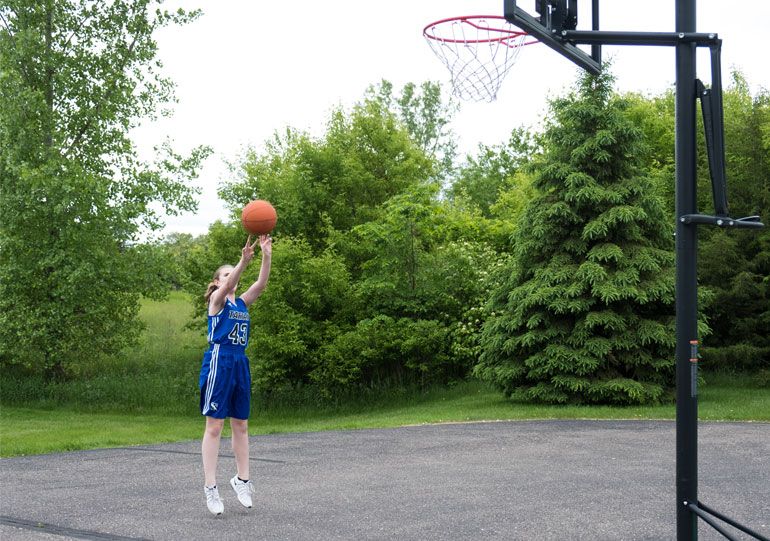
The Surgery and Recovery
The Snyders scheduled Erika’s surgery for the earliest possible date, and Erika had the surgery in early August. The procedure Guillaume performed fused Erika’s spine from her T3 to her L1 vertebrae.
“She was up and walking that day. Everyone was calling her a rock star.” Debra says. “Dr. Guillaume wanted to give her as much mobility as possible. He said that if they straightened her thoracic curve, the lumbar would straighten out too, kind of like pulling a string. At her follow up appointment, her thoracic curve was 15 degrees, and her lumbar curve was only nine.”
Straight Shooter, Respected on All Sides
Though her recovery took time, and she’ll admit that she had some difficulty sitting on the sidelines for a bit, Erika is back to being the active child she is. This past September she was able to return to playing basketball, and her team took fourth place in state.
She also plays softball, tennis, golf, and three instruments. She's fond of riding roller coasters and other than avoiding hockey and football, has no other restrictions.
The rest is best coming from her.
Erika:
I had to stay in the hospital for a few days, but the recovery wasn’t all bad. My whole family came up, and it was good to know that everyone was there for me.
After a little while when I was able to return to my usual activities, I started to notice some changes. One came when I started playing basketball and realized that for the first time, I was shooting straight. Due to my scoliosis, I had been overcompensating.
It took a little getting used to, but all of the sudden I was shooting more confidently. After going through the surgery, I realized that I’m a lot stronger than I ever thought I was.
I think the people at Gillette played a big part in helping me realize that. Not just in terms of the surgery, but also with the positive encouragement from the therapists, fun nurses, doctors, and everyone.
When I talked to the girl my mom introduced me to after my follow-up appointment, it was nice to share my experiences and make her and her mom feel more safe and secure. I told them that the hardest part is the going. When you have all these friendly faces checking up on you, once you get there they make sure that everything goes OK.
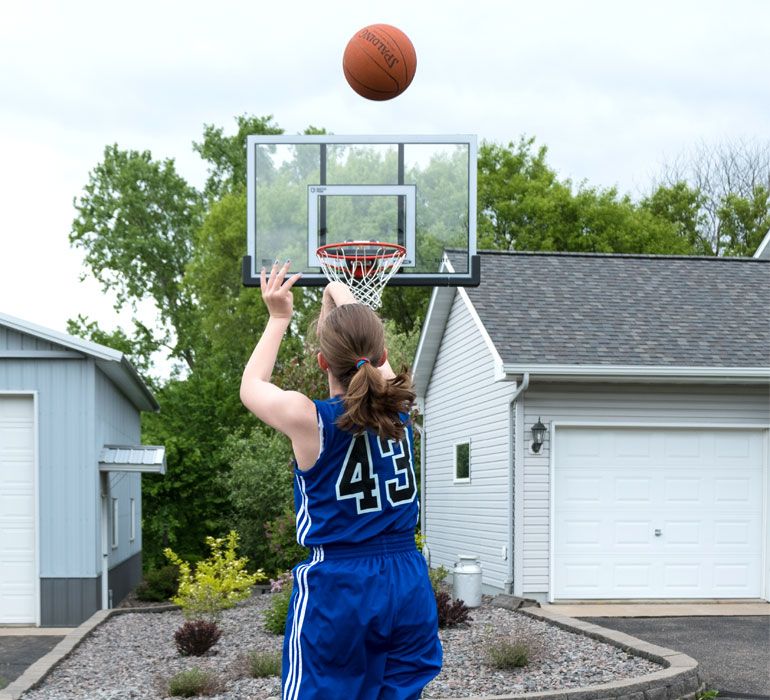
Do these symptoms sound familiar? Our 30-minute consult appointment could help get answers.
Request an appointment to connect with Gillette providers.
Meet a care team provider, find a location, learn how to get a second opinion, and more.
Gillette kids fuel our mission. You provide the spark. Donate today.
